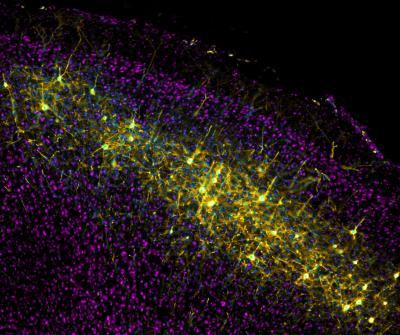 http://www.salk.edu/news/pressrelease_details.php?press_id=623
http://www.salk.edu/news/pressrelease_details.php?press_id=623
Salk and Gladstone Institute scientists have found a way to untangle neural networks by enhancing a brain mapping technique that they first developed in 2007.
“These initial results should be treated as a resource not only for decoding how this network guides the vast array of very distinct brain functions, but also how dysfunctions in different parts of this network can lead to different neurological conditions,” said Salk professor Edward Callaway.
The researchers combined mouse models with a tracing technique known as the monosynaptic rabies virus system to assemble maps of neurons that connect with the basal ganglia, a region of the brain that is involved in movement and decision making.
“The monosynaptic rabies virus approach is ingenious in the exquisite precision that it offers compared with previous methods, which were messier with a much lower resolution,” explained Gladstone investigator Professor Anatol Kreitzer. “In this paper, we took the approach one step further by activating the tracer genetically, which ensures that it is only turned on in specific neurons in the basal ganglia. This is a huge leap forward technologically, as we can be sure that we’re following only the networks that connect to particular kinds of cells in the basal ganglia from other parts of the brain.”
Leave a Reply